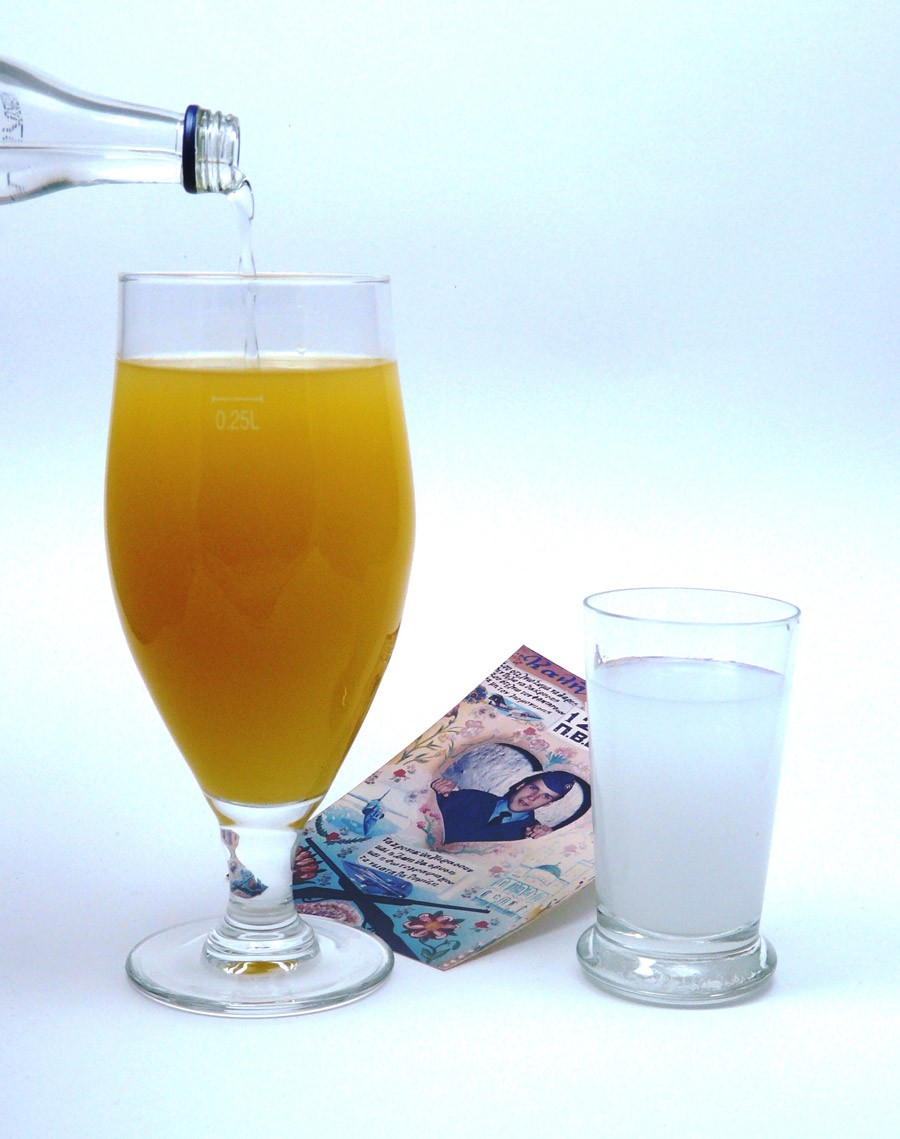The way the younger generations drink ouzo has been undergoing changes, but the more that way changes the more it stays the same.
narrative: Ismene Kilia
photography: Haris Vekris
Most of us are well versed in the way ouzo should be drunk and have been familiar with that way since childhood: we’ve watched our parents, grandparents, and their friends gather before the midday repast around a small, round table. They would order ouzo and all sorts of appetizers, often accompanying that ritual with a game of backgammon. First, they’d pour a tiny amount of water over their ouzo. Next, they’d drop some ice in their ouzo glass. Last, they’d sit back and enjoy it sip by sip without hurrying the process in any way. The leisurely pace ouzo is drunk at is what makes ouzo such a pleasure to drink, drawing groups of people around small, round tables like a magnet: where there’s ouzo there’s also small talk.
Being quite familiar with that classic way of enjoying a glass of ouzo, I was perplexed one Saturday evening when I met a friend of mine. He was standing next to a kiosk (Greece’s answer to a mini-market), holding a small bottle of ouzo in one hand and a carton of banana-sour cherry juice in the other. He reasoned that it might be to our advantage to do our drinking before we entered the venue where we had decided to spend our night. The way he put it, the venue had a pricey cover fee at the entrance and drinking before we went in would be preferable to running an exorbitant bill and having to pay through the nose.
Here’s another time when something I found odd happened. It was the time when a friend of a friend turned everything I know about consuming ouzo upside down and inside out. The evening was well advanced when my friend and I met the friend of my friend. We sat at our haunt, a Greek meze place known for catering to customers of all ages. My friend ordered ouzo. His order took me by surprise: “how on earth can you drink ouzo so late at night?” I wondered. Equally flummoxed was that third party that sat with us but his astonishment was of an altogether different kind than mine: “Wow! Is that how you drink ouzo? Neat? Just neat? I mix it with sour cherry juice,” he informed us and mentioned a Greek brand of juice. Then he went on to advise us that “It’s the ideal combination of flavors and you can drink your ouzo faster since its strong taste is balanced out by the juice’s flavor,” and ended the lecture by stressing that “It’s just what you need when you’re having the blues!”
And that is how we three started talking about cocktails based on ouzo, one of the staples many bars have on stock. It’s hard to glean from the cocktails’ names that they’re ouzo-based since savvy bartenders, in their effort to experiment and innovate, give ouzo-based cocktails creative names. Still, cocktails aside, we are now witnessing the emergence of new ways of introducing ouzo into today’s “mass” entertainment. One of those fresh ideas, actually my favorite one, involves SUNOUZO. Its makers mix ouzo with orange, sour cherry, lemon, or mint-flavored lemon juice, attracting in that way the younger crowd which is on a quest for alternative ways of drinking fun. SUNOUZO is a low-alcohol drink which, apart from letting your head stay on an even keel, needs no appetizers to go with it.
It appears that the way ouzo is consumed is on a fast train to Changeville so that ouzo may serve the ever-straitened younger crowd as well as another demographic which has discovered that mixing ouzo with some kind of juice gets you to “seventh heaven” faster. A third demographic prefers that alternative way of consuming ouzo because they can enjoy it every day as a refreshing, low-alcohol pause to their daily routine. These alternative ways of drinking ouzo do not make Greece’s national drink less “folksy” nor do they alter its identity. On the contrary, they enrich the history of ouzo and serve all demographics of all ages and preferences. Greek appetizers and a round of backgammon may no longer be the common denominator of all who drink ouzo but togetherness and social interaction are certainly still part of the equation and are still there, alive and well.






